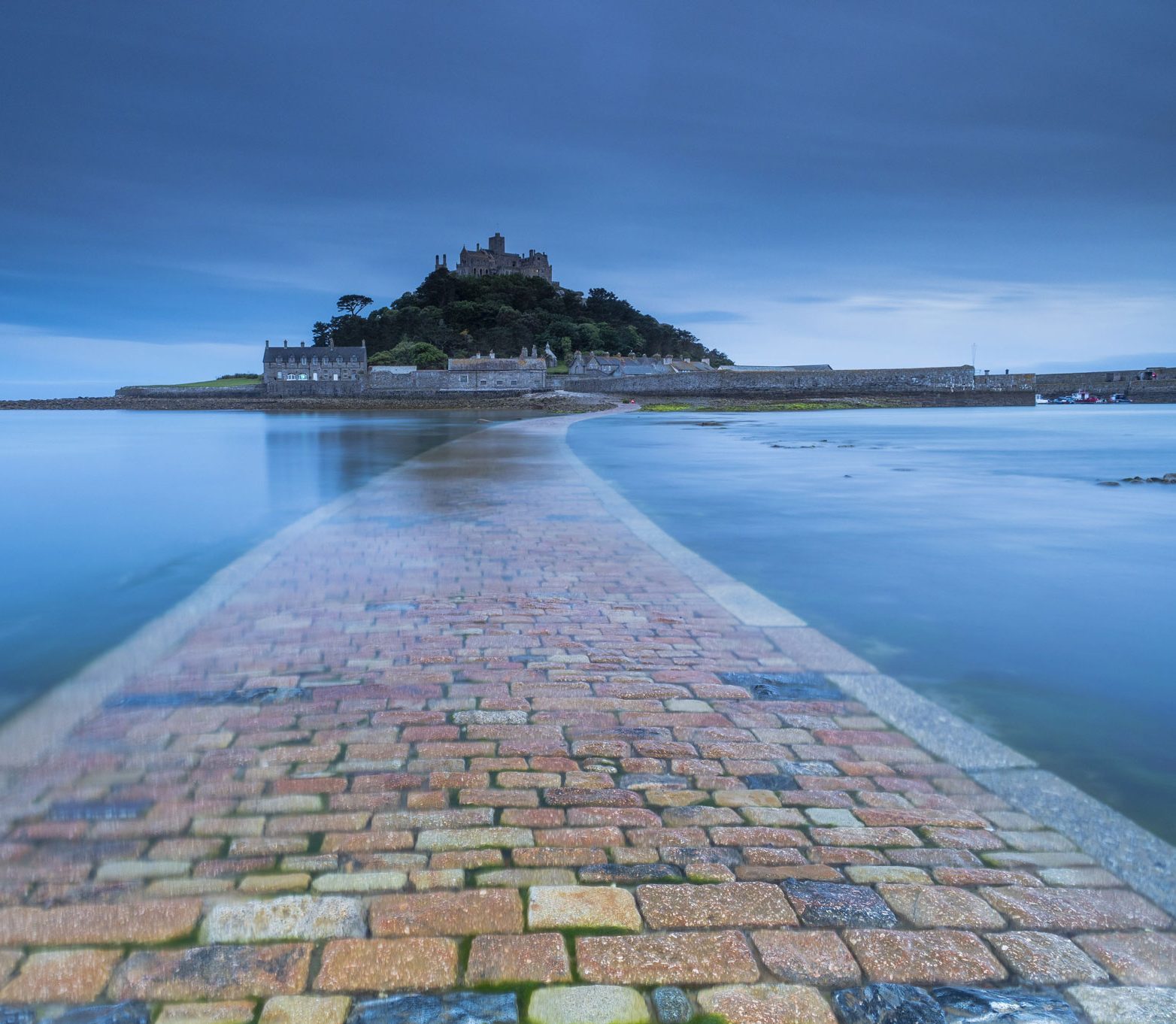Summary
Enchanting History of St. Michael’s Mount
Delve into the storied past of St. Michael’s Mount, a tidal island located off the Cornish coast of England. Standing majestically above the sea, it boasts a medley of legend and history. The site has seen different faces of power, from a monastic sanctuary to a fortified castle. Its medieval church and priory stand testimony to the spirituality and resilience of its past inhabitants. The Mount tells tales of Celtic saints and miracles, adding depth to its cultural significance. It unfolds the rich tapestry of England’s history, attracting historians and travelers alike.
Get your dose of History via Email
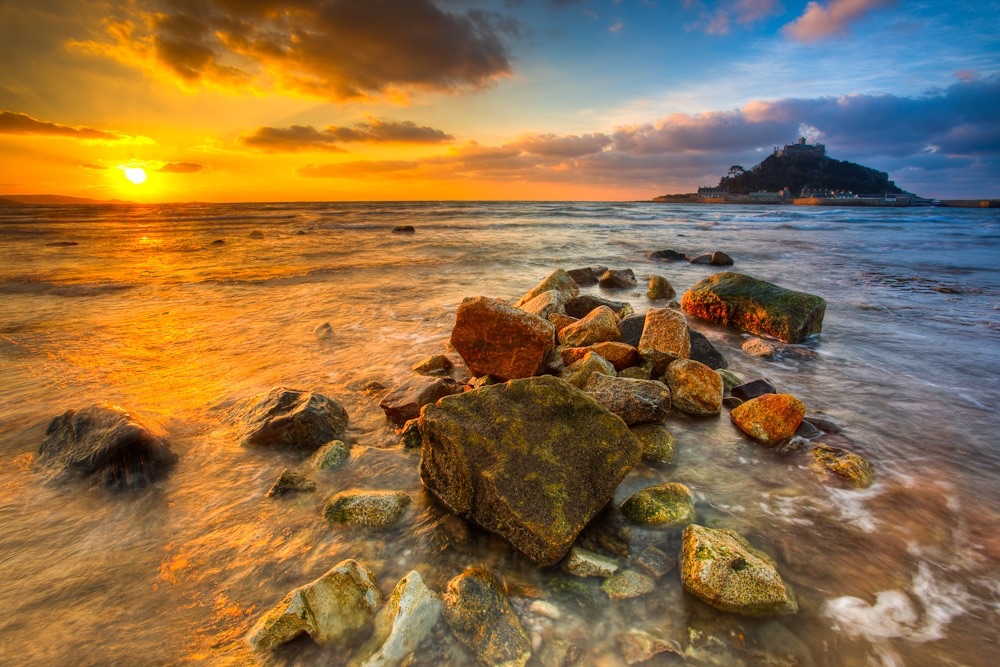
Natural Beauty and Strategic Importance
Amidst its historical charm, St. Michael’s Mount also captivates with its natural splendor. The island’s unique tidal causeway emerges from the sea, inviting visitors to walk in the footsteps of pilgrims. It’s not just its beauty but also its strategic position that has made it a site of military significance throughout history. The commanding views from the battlements offer a glimpse into why this location was so heavily fortified. This blend of natural beauty and historical significance makes the Mount a treasured landmark.
Legacy Preserved for Future Generations
Today, St. Michael’s Mount continues to thrive as a living community. It’s a place where history is not just remembered, but also preserved. Visitors can explore the ancestral home of the St Aubyn family, which is stewarded by the National Trust. The Mount’s conservation reflects a commitment to safeguarding this piece of heritage for future generations. Educational programs and visitor experiences are carefully curated to offer insight into the Mount’s storied past. It stands as an insignia of the region’s dedication to its cultural legacy.
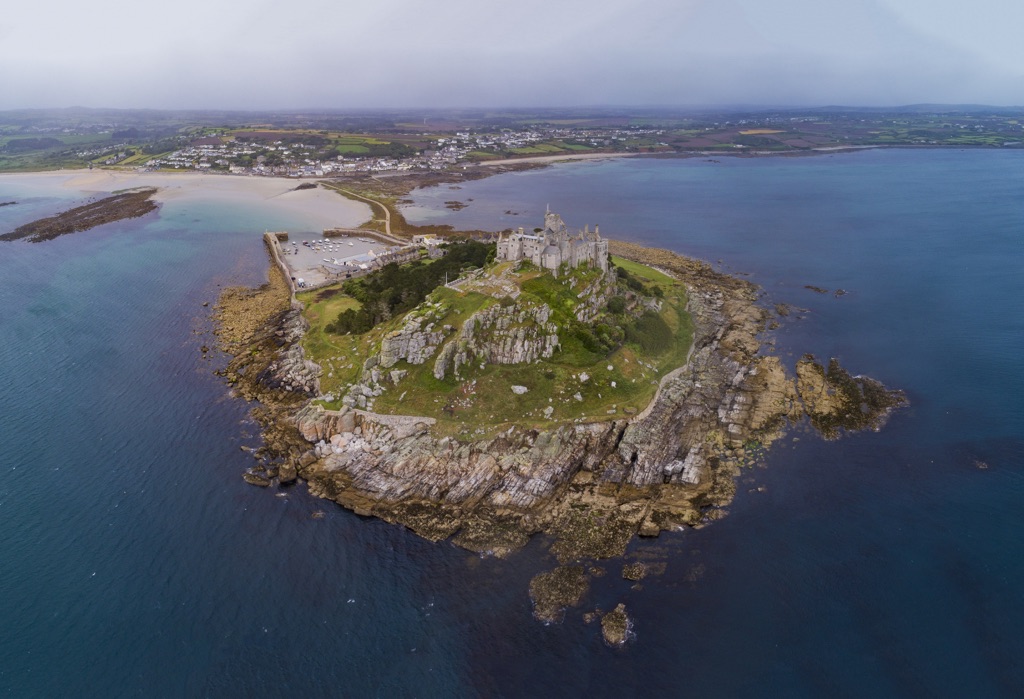
Historical Background of St. Michael’s Mount
A Sacred Beginning
St. Michael’s Mount first captivates history as a religious sanctuary. Legend holds that in 495 AD, fishermen witnessed the Archangel St. Michael here. Thus began the site’s spiritual journey. Monks from Mont St. Michel in France settled on the Mount in the 12th century. They built the church and priory that still stand today. Their dedication to God added a sacred chapter to the Mount’s narrative. The monastery signified peace and hope amid England’s turbulent medieval era.
Military Fortitude and Feudal Power
In time, the Mount’s purpose shifted from sacred to strategic. Given its vantage point over the English Channel, it was fortified. This was especially true during the Wars of the Roses. The Mount saw battles and sieges that stamped their mark on English history. Its ownership passed amongst nobles, each leaving their legacy in stone and story. Part castle, part fortress, it showcased military prowess. The Mount reflects England’s fierce determination for sovereignty and security.
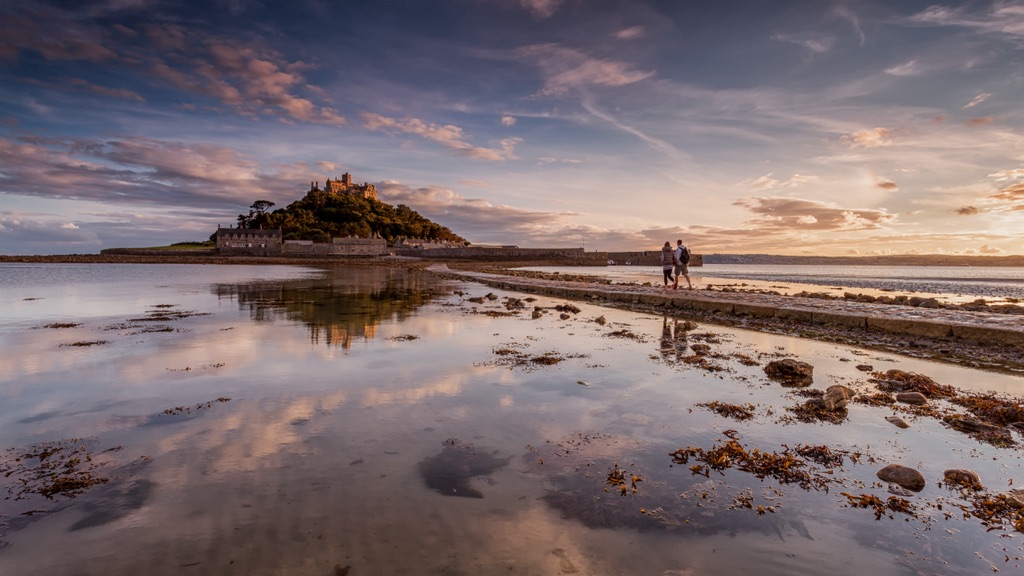
The Cornish Jewel in the Tudor Crown
The Tudor period brought more change for St. Michael’s Mount. Under Henry VIII’s reign, religious houses in England faced dissolution. As such, the Mount’s importance evolved once more. It became part of the defensive coastal network against potential invasion. The castle was reinforced, its cannons ready to defend the realm. Later, under Queen Elizabeth I, it remained a symbol of defiance. It was strength on the shoreline, saving Cornwall from conquest.
As centuries turned, St. Michael’s Mount transitioned to a stately home. The St Aubyn family came into stewardship in the 17th century. They began a new chapter as caretakers of this historical treasure. Their touch added domestic warmth to its stern battlements. The family continues to live there today, in partnership with the National Trust. Together, they preserve it for all to cherish. The Mount remains a home, not just a footnote in history’s pages.
Today, St. Michael’s Mount is a testament to past and present. It invites visitors to wander its halls and relive history. Gardens bloom on rocky cliffs, softening its stern demeanor. The island is at once a fortress, a sanctuary, and a home. It honors its warrior days as much as its spiritual beginnings. Its story is rich and living, beckoning travelers to write their own memories along its paths. A visit here is to touch the fabric of England’s past. It is to understand how history and nature intertwine span.
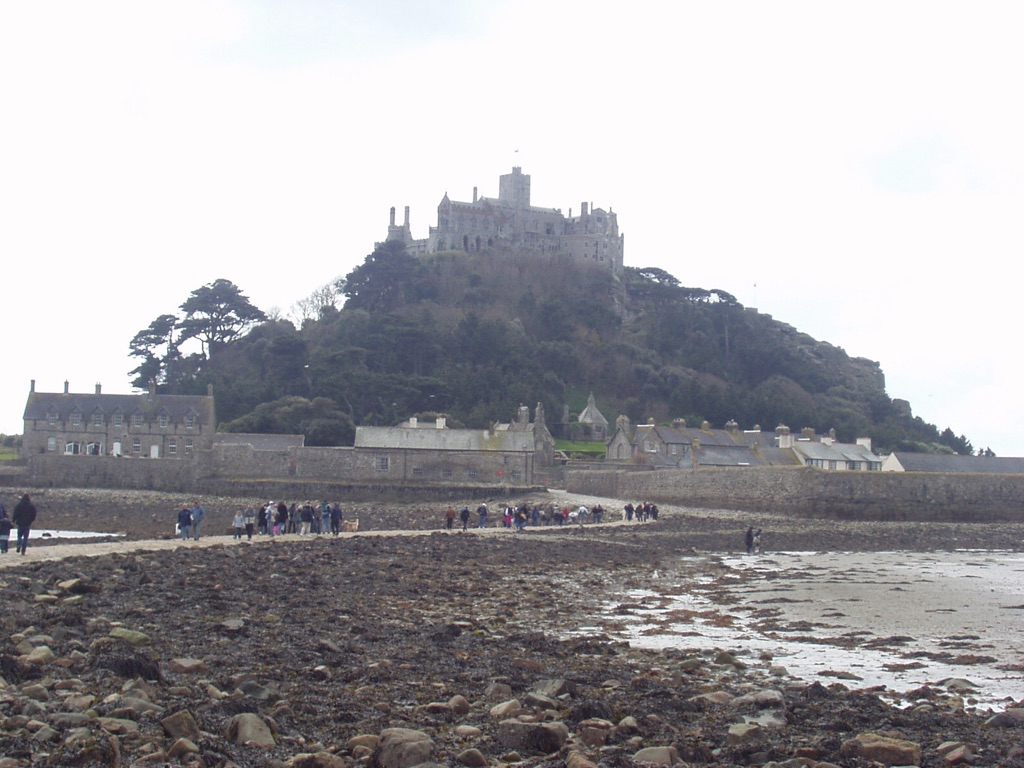
The Discovery of St. Michael’s Mount
Earliest Spiritual Encounters
According to legend, St. Michael’s Mount was discovered following celestial sightings. Local fishermen in 495 AD were astonished by visions of the Archangel Michael. Soon after, monks felt drawn to this Cornish site, establishing an early religious presence signaling its holy discovery. This origin established the site’s enduring association with spirituality and pilgrimage, more so than its later military significance.
A Monastic Hub Emerges
The island’s sanctity drew Benedictine monks from Mont St. Michel in France during the 12th century, indicating another layer of discovery. They forged a religious nexus that has withstood time, further sealing the Mount’s holy reputation. Even today, signs of divine admiration remain woven into the island’s cultural fabric, celebrating its rediscovery as a spiritual abode.
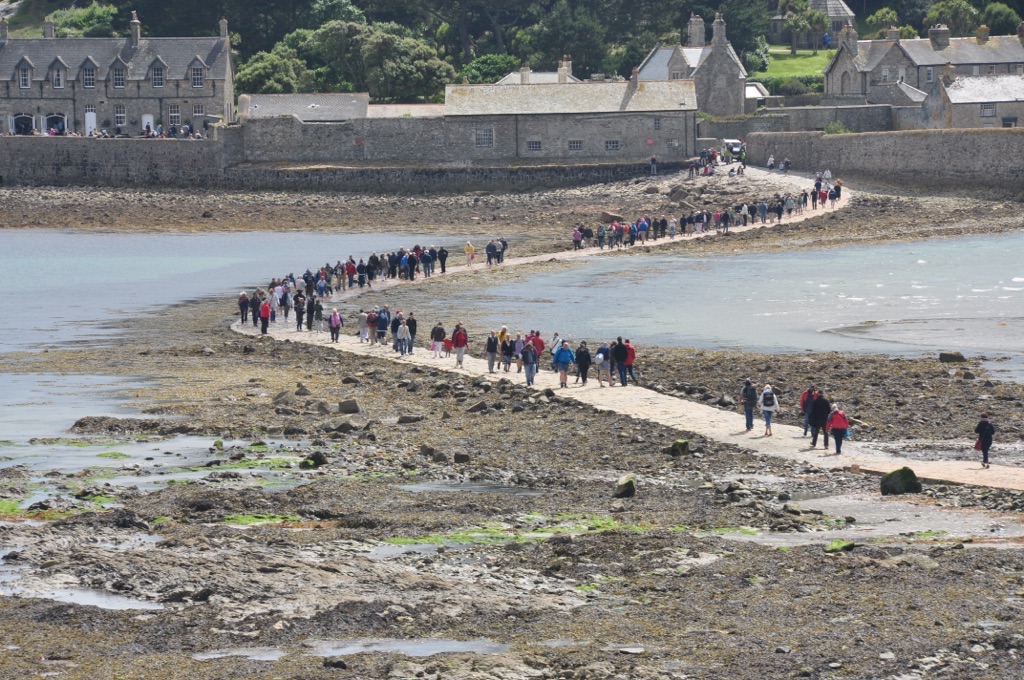
Rebirth as a Fortress
During the medieval period, the Mount was rediscovered for its strategic significance. Its prime location overlooking the English Channel gave it immense defensive value. Fortifications ensued, and it transitioned from monastic seclusion to military stronghold. This reconception as a pivotal fortification underscored its reemergence as an essential defense point.
The Mount’s strategic rediscovery continued under the Tudor monarchy. It transformed from spiritual retreat to a fortified bulwark under King Henry VIII. Henry’s fortifying efforts prepared it for potential French invasions, showcasing the island’s shifting purpose throughout history. It highlights the perpetual rediscovery and adaptation according to England’s political climate.
In later centuries, St. Michael’s Mount witnessed a domestic rediscovery. The St Aubyn family llegitimized its role as a historical dwelling. It adopted a softer, more cultivated character as the family intertwined their lives with it. This phase marked yet another discovery for the island – as a lived-in monument embracing its past while adapting to modern times.
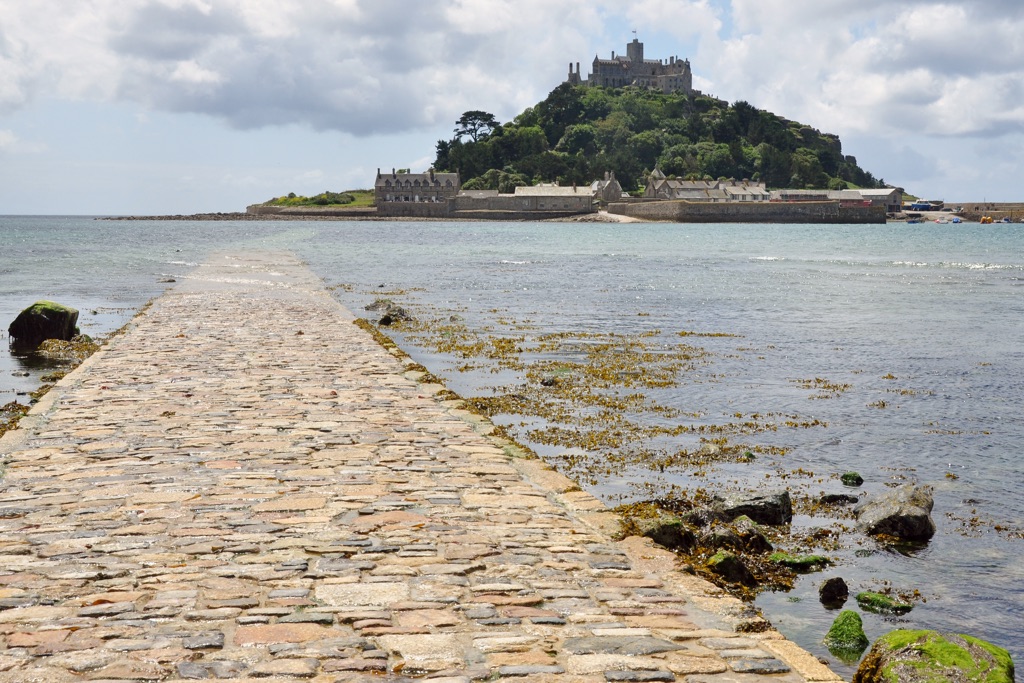
Cultural Significance, Dating methods, Theories and Interpretations
The Cultural Heart of Cornwall
St. Michael’s Mount stands not simply as a monument but as a cultural icon. For centuries, it has shaped the identity of Cornwall and beyond. Celebrated in folklore and history, the island encapsulates faith, fortitude, and family lineage. Its annual festivals and traditions draw from a well of communal memory, enriching Cornish life. The cultural significance of the Mount unfolds in tales passed down through generations, cementing its place in the region’s soul.
Unlocking Ages: The Role of Radiocarbon Dating
To understand the Mount’s timeline, scientists turn to radiocarbon dating. This method has been crucial in mapping the site’s occupation since the Iron Age. By measuring carbon isotopes in organic materials, researchers pinpoint when human activity began here. For instance, the technique revealed aged timber within the castle, dating back to the Norman conquest. These scientific insights offer a fascinating glimpse into the island’s deep past.

Mysteries and Legends: Evaluating Theories
Myths swirl around St. Michael’s Mount, from saintly apparitions to hidden treasures. Scholars sift through stories and evidence alike, seeking truth amid legend. They propose theories on the island’s role in maritime trade and in defending the realm. Yet, some aspects of the Mount’s past defy a single explanation. Thus, it remains a beacon for enquiry, inviting us to look closer and question our assumptions.
Theories on the Mount’s construction evoke admiration for medieval engineering. Archaeologists interpret the surviving structure as a testament to historical craftsmanship. Yet, they also ponder the logistics of building on such inhospitable terrain. The visions for its design and purpose inspire endless debate and study, proving that the site’s architecture is as much about ingenuity as it is about necessity.
Interpretations of the Mount’s significance continue to evolve with each discovery. Oral histories, religious texts, and military records all contribute to a richer understanding. They paint a picture of a site that has weathered invasions, served as a beacon of piety, and stood the test of time. As each layer unfolds, it contributes to the ongoing story—an intricate mosaic of human ambition, faith, and survival.
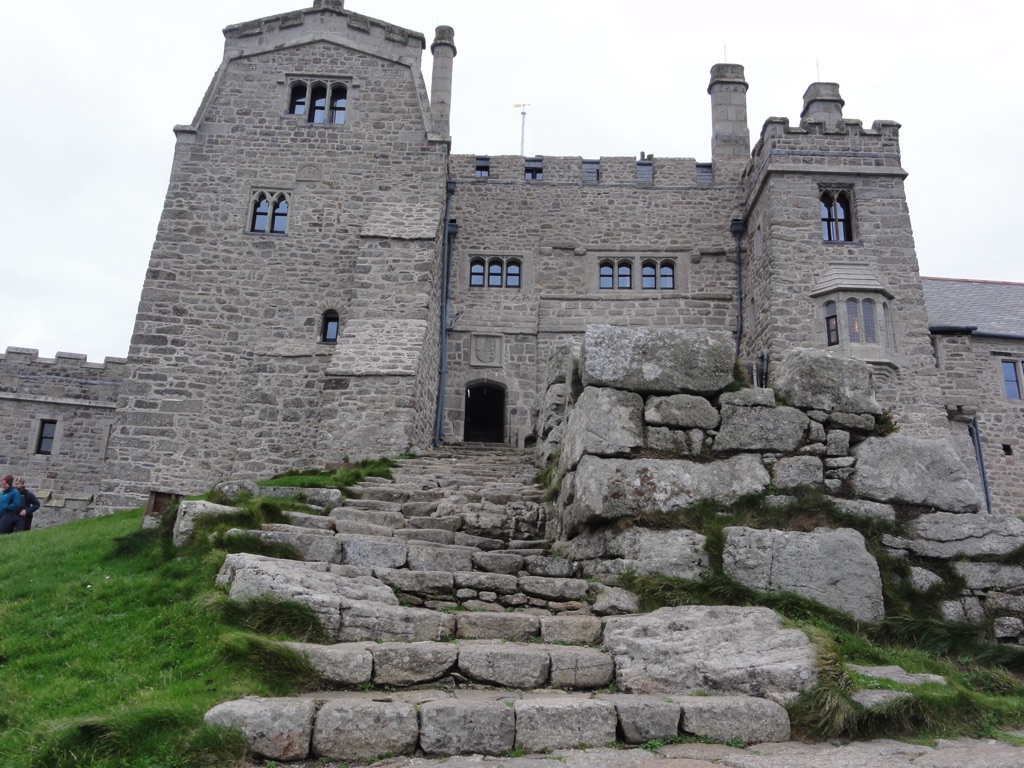
Conclusion and Sources
In conclusion, St. Michael’s Mount is much more than a landmark. It’s a tapestry of history, myths, and traditions that define Cornwall’s cultural landscape. From early monastic settlements to military fortifications, every layer of its past contributes to a broader understanding of human endurance and creativity. Its legacy, preserved by both the National Trust and the St Aubyn family, ensures that it continues to captivate and inspire. As a historical site, the Mount offers invaluable insights into the confluence of spiritual, military, and domestic life throughout the ages.
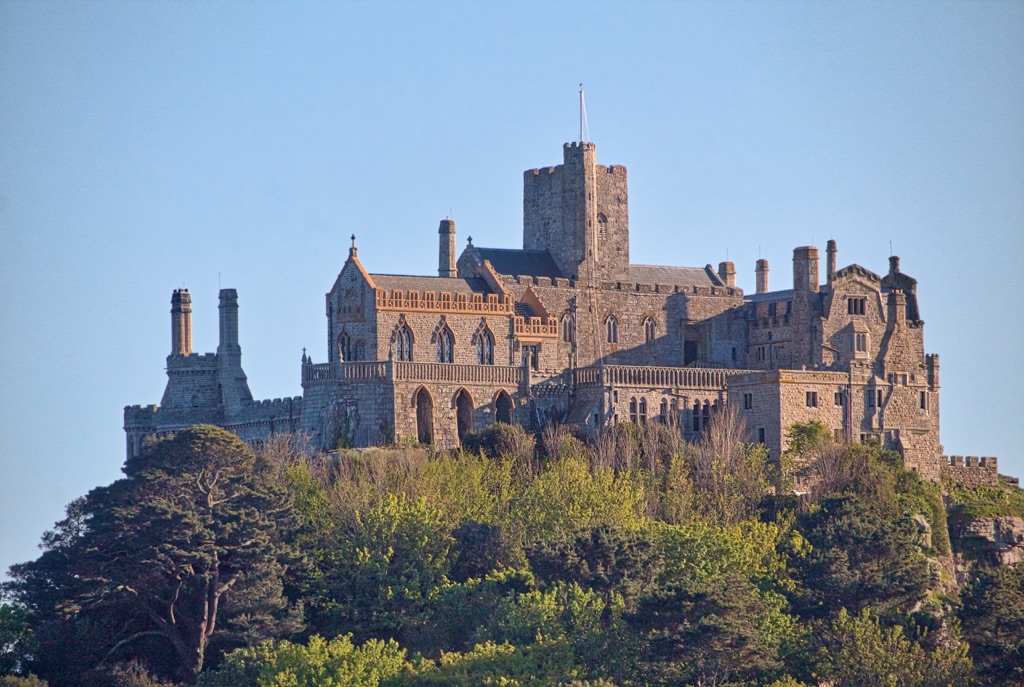
For further reading and to validate the information presented in this article, the following sources are recommended:
Or you can check any of these reputable archaeological and historical texts:
Cornwall’s History & Heritage. (2017). The Story of St Michael’s Mount.
English Heritage. (n.d.). St. Michael’s Mount: History and Research.

